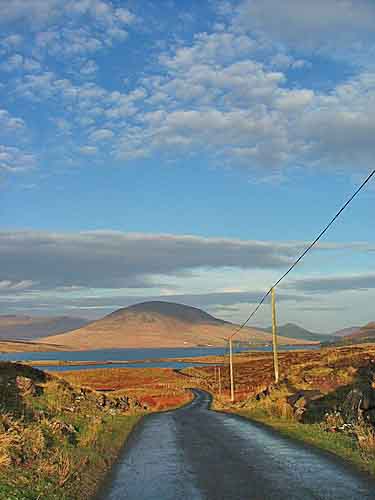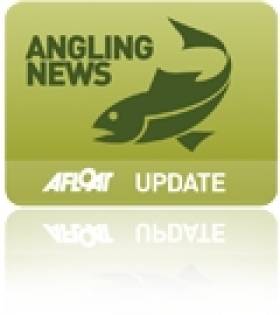Displaying items by tag: Ballycroy
Bumper Catch at Rock House Fishery
Described by The Irish Times' Derek Evans as "one of the Great Fishing Houses of Ireland", the Rock House fishery in Co Mayo boasted banner numbers of salmon and sea trout catches this spring and summer.
April started off strong on the Owenduff River in Ballycroy, with three spring salmon weighing between 9.5lb and 12lb landed in the first two weeks.
This was followed by respectable numbers in May of 30 salmon and three sea trout. But June and July were the bumper time for angling, with thundery rain aiding the catch.
Even August proved bountiful despite lacking in fresh grilse, with 12 salmon ad 27 sea trout caught throughout the month.
"Drift netting laws appear to be having a positive effect," said Rock House's Sibylle Geffroy.
The Irish Times has more on the story HERE.
Bellacragher Bay Boat Club

Bellacragher Bay Boat Club
Bellacragher Bay Boat Club was formed in 2003 by Seamus Butler, Claggan and Brian Masterson Owenduff, in response to interest from people in Achill, Mulranny and Ballycroy. In choosing a name, they picked the Bay that links all three areas together – Bellacragher Bay, pictured left.
A introduction to sailing week was held on the four days after the August Bank Holiday 2003. On completion of the training, five 14ft boats sailed 6 miles to innisbiggle for the Island Festival.
The sailing week has continued to the present and grown significantly. In 2008 approx 60 people took part and there was a fleet of 18 boats. The Club has had considerable success in obtaining training funding for commercial and leisure marine courses with Leader and MFG providing the funds.
The Club members come from varied backgrounds but many have strong marine backgrounds and experience in all manner of boating activities, cruiser sailing, dinghy sailing, canoeing, powerboating, commercial fishing and diving/sking/kiting.
In August 2008, the club was offered affilliation with The Irish Sailing Association, The ISA is responsible for most marine training in the country, their courses and certificates are recognised and approved by the Irish Government. Membership of The ISA was a major stepping stone in the advancement of the club, the ISA were very impressed with the club organisation and asked if they could use some of their techniques.
In 2009, the Club plans to introduce a weekly sailing session in Claggan. This will be on a weekday evening, to suit tides, starting in may and ending in October. Sailing will be on 420s 470s, Lasers, andToppers with a fully equipped and qualified safety boat and crew supervising the sailing. Any one that wishes to have a go is very welcome to come along, even if you just want to have a look. There is always a few on the shore, getting boats ready,repairing them or looking after the BBQ. The Sailing will follow the ISA syllabus and arrangements have been made for an ISA Examiner to visit the Summer Sailing camp to assess Sailors and test them for the various sailing levels.
The Sailing branch of the club is also home to the Sea Scouts of the 22nd Mayo Troop. The club provides the scouts with all the waterborne experience they need. In addition to dinghy sailing, short cruises to Clare Island, Inishturk and Inishboffin take place during the summer where possible.The boats used are sailing cruisers and powerboats/sports cruisers. There are usually crew places available.
There is so much to learn about the sea that a short article is barely able to touch on the subject but people are very welcome to join or visit one of the sessions. You may observe Navigation, ropework, capsize/survival techniques or first aid and may find that it appeals to you!
For further information contact Seamus Butler 087 657 9348 or email [email protected]
Bellacragher Bay Boat Club, Brian Masterson, Owenduff, Achill, Co Mayo. Tel: 087 237 0102, email: [email protected]
Have we got your club details? Click here to get involved






























































